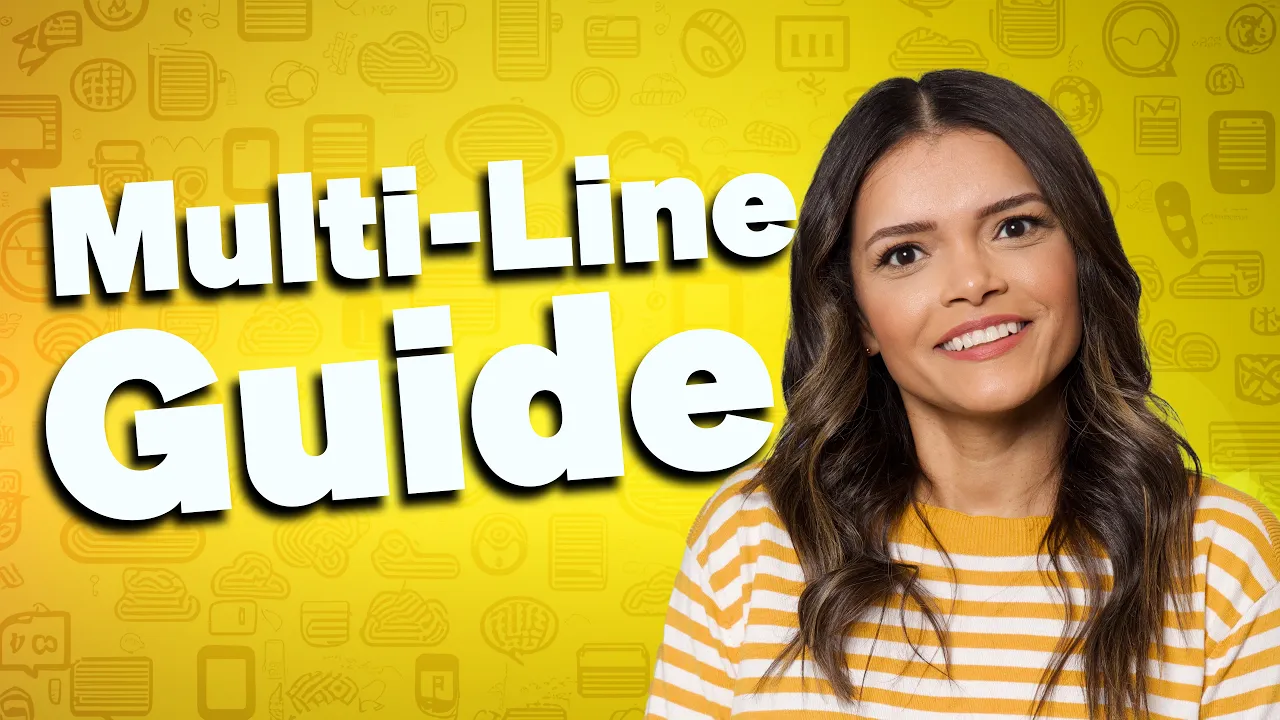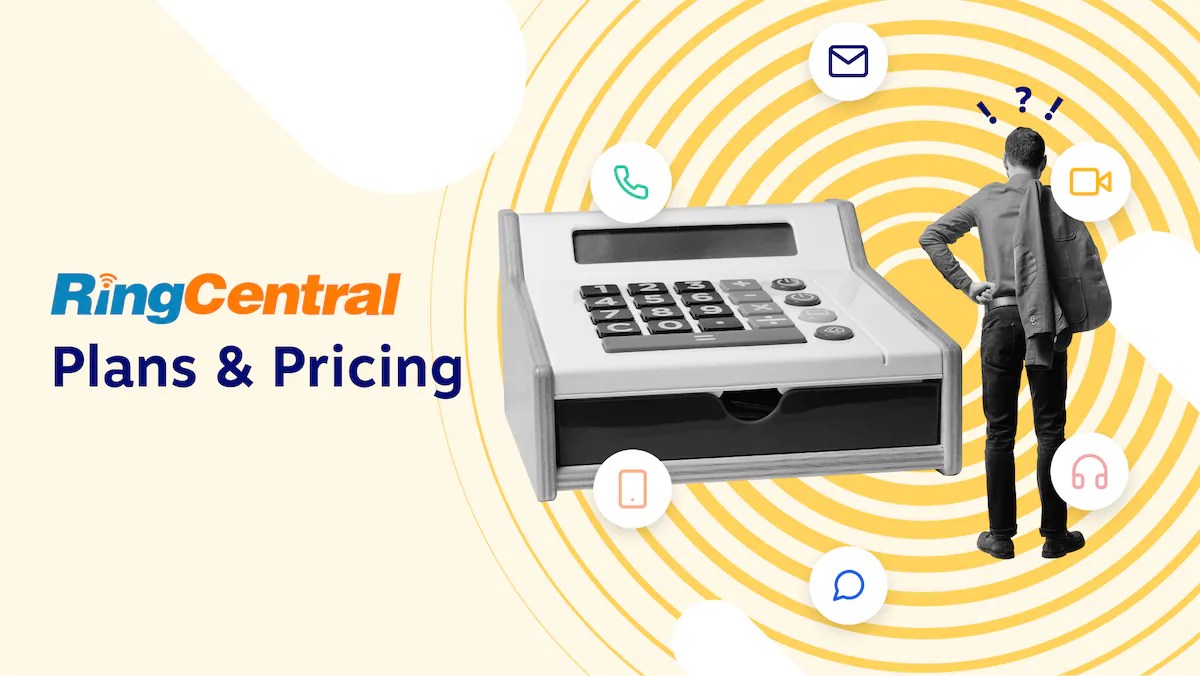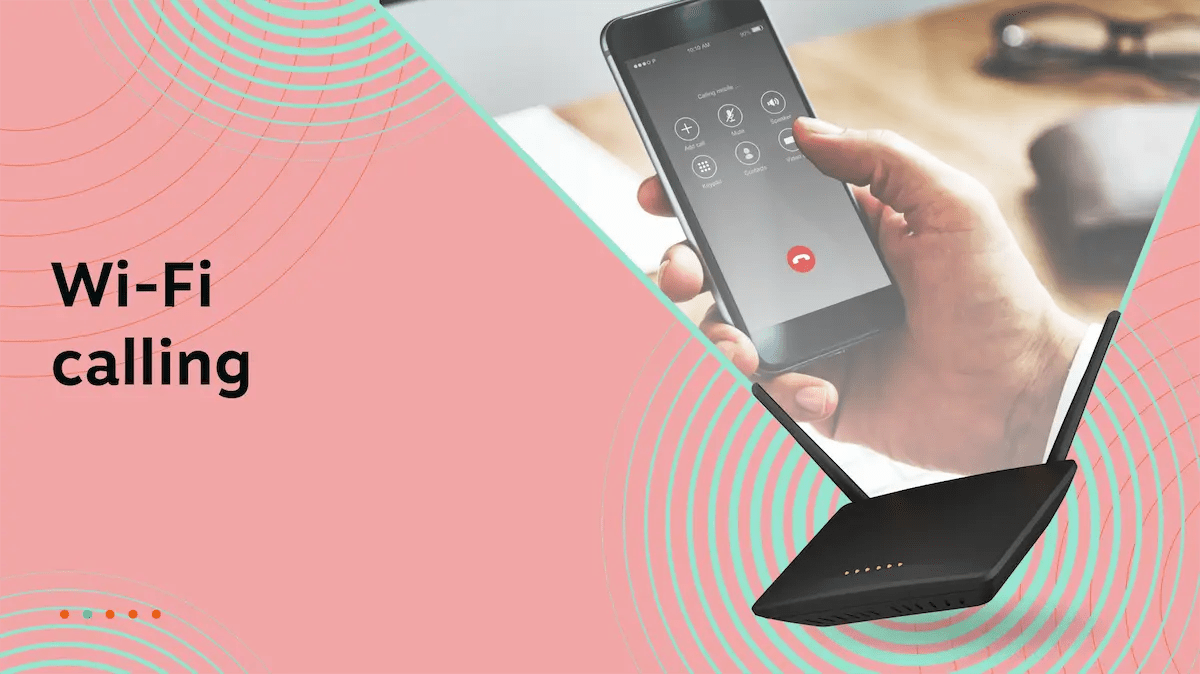Businesses feel the pressure to ramp up their outbound efforts to drive more conversions and close deals faster. That’s why multi-line dialer solutions are gaining serious traction across call centers and sales floors. This demand reflects the projected $1.22 billion global auto dialer software market revenue by 2034.
Speed and automation are no longer trends but business essentials. If your team’s still using manual dials or outdated systems, now’s the time to consider exploring the benefits of automated dialing software solutions.
How a Multi-Line Dialer Works
A multi-line dialer lets you dial several phone numbers at once.

Today’s tech has elevated multi-line dialer platforms to be highly customizable. Most multidisciplinary platforms handle DNC list scrubbing and filter out known litigators. They also let businesses build granular campaigns based on lead types, with conversation scripts that can be customized using real-time CRM data.
This means agents are not just dialing faster; they’re dialing better. Once your campaign setup is in place, the dialer executes each part of the calling process with precision.
Parallel dialing technology
The core benefit of multi-line dialing is its ability to contact multiple leads at once. The dialer uses algorithms to assess when to place new calls. This ensures that the momentum is there but doesn’t overwhelm available agents.
Parallel dialing technology boosts call volume while minimizing wait time. It keeps call agents or sales reps in rhythm. The best call center dialer tools also let agents adjust their pacing on the fly. This way, agents stay in control over how aggressive or conservative their strategy is.
Call connection process
The dialer “listens” once it reaches out to multiple phone numbers. It filters out answering machines, busy signals, and disconnected lines through voice detection. It then promptly transfers live connections to agents. The goal in this stage isn’t just connection rates but delivering those connections to the right person at the right time. This process helps maintain a natural call flow, reducing awkward silences that can lead to missed conversations or dropped calls.
Key differences from other dialers
| Dialer Type | Key Behavior | Best Use Case |
|---|---|---|
| Single-line dialer | Dials one lead at a time; waits for the outcome | Personalized sales or high-touch outreach |
| Predictive dialer | Uses pacing algorithms to predict agent availability; may cause delay | High-traffic telemarketing |
| Power dialer | Automates the dialing process; connects only one lead per agent | Sales reps needing speed for moderate call volumes |
| Multi-line dialer | Dials several leads simultaneously; prioritizes available agents | High-volume teams focused on speed and scale |
Compliance & Regulations: What You Need to Know
Compliance is fundamental if you’re dialing at scale. Staying compliant protects your brand and your bottom line, whether you’re running a call center, sales operation, or high-volume outreach campaign.
TCPA & TSR compliance
The Telephone Consumer Protection Act (TCPA) and Telemarketing Sales Rule (TSR) define the ground rules for auto dialers in the US. These laws require:
- Clear consent
- Call identification
- Strict control over dropped call rates
Violations of the TCPA, including the use of unauthorized auto dialing, can result in fines of up to $1,500 per call, according to Contact Center Compliance. Apart from the financial risk, non-compliance affects operations. Disregarding the rules can get your business flagged, blocked, or blacklisted by carriers. This makes it harder to sustain reliable connection rates over time.

Call abandonment & “dead air” risks
Multi-line dialing is only effective if agents are ready when someone picks up the call. If all the agents are unavailable, the call is dropped. Much worse is greeting the other line with dead air. Both situations create a jarring experience and diminish customer trust.
Under FTC regulations, businesses are required to have no more than a 3% abandoned rate over 30 days. Some carriers also track call abandonment as a factor to determine caller ID trustworthiness. This turns the situation into both a compliance concern and a reputation risk.
Do Not Call list management
Scrubbing your contact lists against federal and state Do Not Call (DNC) registries is an enforceable mandate. The FCC requires businesses to check lead data against the National DNC registry every 31 days. Modern dialing platforms make this process seamless by flagging DNC entries before the first call is made.
And this is already playing out on the field. In a recent Reddit thread, real estate professionals voiced concerns about unintentionally violating DNC rules, even when following up with leads. These real-world tensions are pushing teams to adopt dialing software solutions with integrated compliance protection.
STIR/SHAKEN & number reputation
Carriers are keeping suspicious phone numbers in check. Outbound calls are now authenticated with digital certificates through the STIR/SHAKEN framework. The goal is to reduce spoofing. But there’s a catch: when your call volume surges or too many calls go unanswered, carriers may start flagging your number as “Spam Likely” or “Scam Likely.”
To avoid such flags, businesses should rotate numbers and use real-time alerting tools. They also need to monitor reputation across campaigns. Protecting your caller ID integrity should be a core part of your outreach strategy.

Advantages of a Multi-Line Dialer
A great dialer increases speed and gives your team breathing room to focus on the end goal: close deals or provide support. The right multi-line dialer turns outbound chaos into a controlled, performance-driven system. It helps teams work smarter without losing the human touch.
Higher call volume & productivity
Multi-line dialing gets rid of the dreaded pause between calls. Instead of experiencing lulls, agents are continually routed to live conversations. For a sales team that thrives on energy and pace, this translates into more pitches and feedback loops. High call volume and productivity lead to more qualified leads per hour. Platforms with tools for outbound call centers help reinforce this flow through automated pacing and smart lead prioritization.

Reduced agent downtime
Call volume is an important factor in an agent’s performance, but so is consistency. With a multi-line dialer, agents aren’t stuck guessing when the next live call will happen. A steady dialing rhythm keeps agents focused and energized, especially during long stretches of calls. This predictability keeps morale high and conversations sharp while shaving seconds off each call.
Improved sales conversion rates
More connected calls mean faster follow-up, better lead reactivation, and higher conversion rates. For teams that use CRM with real-time tracking, this advantage is amplified when combined with voicemail drops or SMS touchpoints.
The Builders of Authority Podcast notes that when the dialer is built right into the CRM, agents can follow up instantly after each call. This setup initiates the next steps without toggling between tools. The approach not only improves timing but also raises agents’ confidence and consistency.

Optimized workforce efficiency
Good dialers boost and balance agent activity. Multi-line dialing distributes calls based on available agents, which helps managers maintain consistent pacing across the team. This leads to tighter control over outbound calling performance metrics. The call center auto dialer takes this a step further with built-in monitoring tools to spot overload and adjust routing efficiently.

Risks of Using Multi-Line Dialers
Multi-line dialers can be transformative but only if configured correctly. Most risks don’t come from the dialer itself, but from how it’s used. Small missteps can turn into major setbacks for outbound callingoperations.
Telemarketer’s delay & call abandonment
Speed is amazing — until it outpaces the capacity of your team. A telemarketer’s delay, or the slight gap after the recipient answers, instantly signals telemarketing software. This lull can cause many to hang up before the conversation even begins. Worse, if no available agent is ready, the system automatically drops the call. These dropped or delayed responses make each lead harder to reach the second time around.
Spam labeling & number blocking
One of the lesser-known risks of high-volume dialing is reputation decay. Carriers monitor repetitive manual dialing patterns, short calls, and high call abandonment — all of which can result in number blocking. This severely impacts connection rates. Even legitimate phone numbers can be tainted or added to the spam list simply due to mismanaged cadence or lack of area code rotations.

Negative customer experience
Not all calls lead to a sale, but every call leads to an impression. Using multi-line dialing without filters can result in low-context, robotic interactions. Trust crumbles fast if agents are constantly catching people off guard, don’t have lead info on hand, or miss the right timing. This is especially true if follow-ups are coupled with impersonal text messages. Engagement takes a hit when calls feel like a volume game.
Compliance risks & regulatory penalties
Most teams understand they need to follow the rules. But what gets overlooked is how multi-line dialingcan amplify mistakes. One missed DNC flag or misconfigured sales dialer setting can lead to unanswered calls, recordkeeping gaps, and violations that stack up quickly. Without routine auditing of call logs, contact lists, and system behavior, you risk turning a great tool into a regulatory liability.

Best Practices for Using a Multi-Line Dialer
Even the most sophisticated multi-line dialer can work against you if it’s misconfigured. The key is to prioritize quality, compliance, and reputation.
Optimize call abandonment rate
The difference between 2.9% and 3.1% dropped calls may seem small, but the FTC disagrees. To optimize the call abandonment rate, set adaptive pacing rules that adjust in real time based on available agents. Dialers with dynamic pacing features can slow down automatically during peak talk times, preventing unanswered calls.
This is where smarter tools outperform brute-force dialers. Outbound dialers with built-in thresholds and call routing logic help avoid violations before they transpire.
Prioritize call quality over quantity
Rapid-fire calls only work short-term. A better metric than calls per hour is engagement per call. By giving agents space to personalize their pitch and act on CRM insights, you boost connection and improve conversion rates across campaigns. Scaling aggressively can lose momentum if the call quality is subpar.
Use number reputation management tools
Most teams only use reputation tools after they’ve been flagged. Instead of just reacting to reputation dips, plan ahead. Use management tools from the get-go to boost connection rates using local presence dialing. This feature displays your calls with area codes that match those of your leads. This increases pickup rates without the need for repeated redialing.

Regularly audit your active phone numbers. This signals to both carriers and recipients that your outreach is secure and trustworthy.
Train agents on quick engagements
High-speed outreach only works if agents control the first five seconds. The opening moment sets the tone of the conversation. If it feels off, the call is already lost.
Train your agents to catch vocal cues, ease into the conversation, and deliver immediate value. These practices boost engagement and help avoid the awkward silences that trigger robocallflags.
Combine multi-line dialing with voicemail drops
Unanswered calls aren’t totally a lost cause. Even when the lead doesn’t answer, you still have an opportunity to connect. Dropping a prerecorded voicemail keeps your brand top of mind and encourages callbacks. When used strategically, voicemail drops can double as follow-up touchpoints and reduce the pressure on live sales reps to re-engage stale leads.
Ensure that the message is context-aware and aligned with your CRM data. No lead wants to hear a “Sorry, we missed you” when they have already opted out.
Top Multi-Line Dialer Solutions
The best platforms strike a balance between performance and precision. Here are five standout tools for sales teams and call center managers seeking reliable multi-line dialing at scale.
Nextiva (best overall choice)

Nextiva offers a full suite of features integrated into its business communication platform:
- CRM integration via NextivaONE
- AI-powered call pacing
- Spam detection
- Seamless omnichannel outreach (calls, SMS, chat, email)
Nextiva’s customer support is consistently top-tier, making it the go-to platform for scaling operations confidently.
 Pros
Pros
Flexible dialing logic
Unlimited dialing capacity
Seamless softphone compatibility
Easy scaling for remote teams
 Cons
Cons
No free trial
US-only access
PhoneBurner

PhoneBurner uses a power dialer approach that connects only when reps are ready. This is optimal for reducing abandoned calls. Its automation suite supports follow-ups through emailandvoicemail, allowing teams to maintain momentum post-call.
 Pros
Pros
Fast onboarding
Efficient lead management
Time-saving automation
 Cons
Cons
Higher-tier pricing
Integration hiccups
Mojo Dialer

Popular among real estate agents and startups, Mojo is built for deep prospecting with smart CRM and lead list workflow. While not the most aggressive dialer, its drip campaign and follow-up features make it a strong choice for long-term outreach.
 Pros
Pros
Lead capture tools
Campaign scheduling
Lightweight CRM sync
 Cons
Cons
Low contact rate
Call lag
JustCall

JustCall, with its real-time call coaching, is designed for data-driven teams. It features speech analytics, call recording, and easy CRM syncing with Salesforce, HubSpot, and Pipedrive. It’s especially robust for teams that want data to refine their pitch over time.
 Pros
Pros
Intuitive UI
Good customer support
Live monitoring and analytics
 Cons
Cons
Steep learning curve
Pricey add-ons
Occasional site lag
BatchDialer

BatchDialer combines a predictive dialer engine with lead scoring. It also includes caller ID monitoring and DNC list tools. While call quality can fluctuate, it’s built for high-output teams that need full visibility across outreach activity.
 Pros
Pros
Quick setup
Clear dashboard
Responsive support
 Cons
Cons
Inconsistent call quality
Clunky number rotation
Steep pricing
Scale Outbound Dialing Using the #1 Multi-Line Dialer: Nextiva
Scaling your outbound calling strategy shouldn’t mean sacrificing control. With Nextiva’s multi-line dialer, your team can maintain precision, compliance, and performance. With smart automation, Nextiva provides full visibility into every call and contact. Its intuitive workflow makes dialing easy for both beginners and power users, especially with these core features:
- Built-in DNC list scrubbing and caller ID protection to reduce compliance risk
- Adaptive call pacing and spam flag prevention to improve connection rates
- Seamless CRM and API integrations for personalized outreach
- Full omnichannel support, including voice, SMS, MMS, email, chat, and social
- Real-time analytics and coaching tools to improve team performance
- Responsive customer support is available 24/7
Ready to transform your team into a high-converting machine? Get a live demo of Nextiva’s multi-line dialer today.
The VoIP phone service 150K SMBs trust.
Move your business phone system to the cloud with superior reliability. Nextiva helps your teams stay connected and deliver the best customer experience.

















 VoIP
VoIP 







